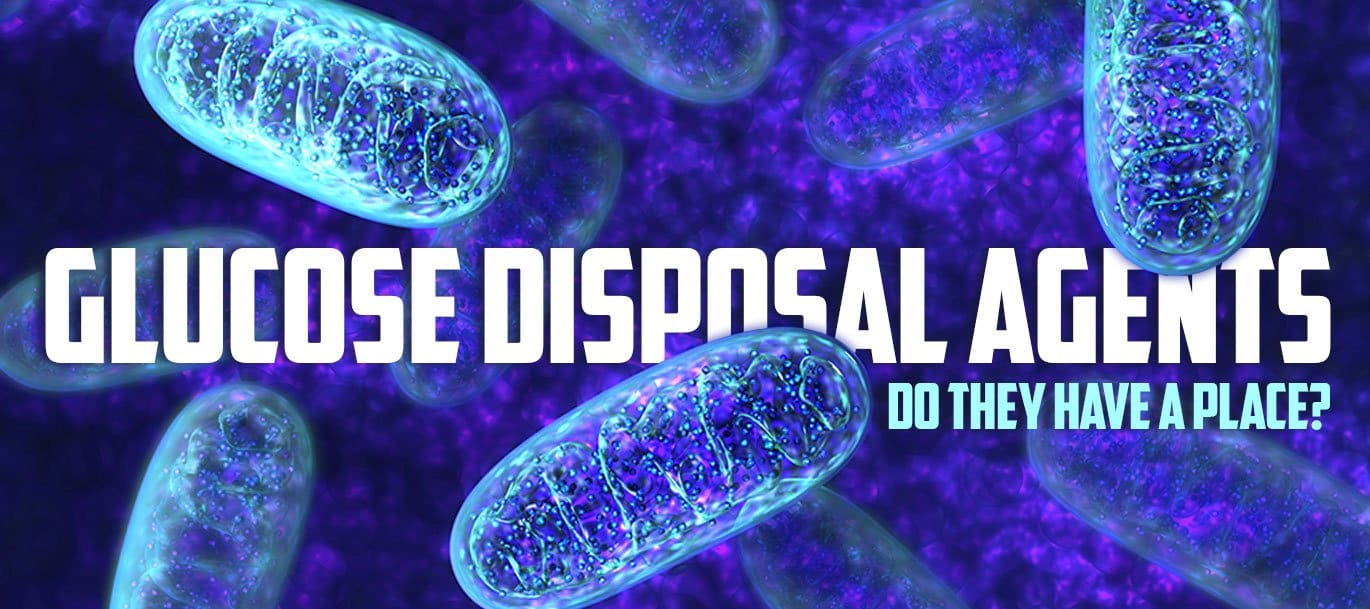Glucose Disposal Agents or GDAs have made quite a name for themselves within the industry and gain more traction month on month.
When you consume carbohydrates, there is a natural rise in blood glucose levels. There is a limit to how much your body wants to allow blood glucose concentrations to rise, this is done to prevent a condition called hyperglycemia (high blood sugar). One of the most powerful tools your body has in order to prevent this, is a hormone called insulin – a hormone that causes glucose to be shuttled or transported into cells so that it can be removed from the bloodstream. Glucose enters cells through something called GLUT transporters.
Claims in Relation to GDAs
GDAs claim to be able to improve the use of blood glucose. They also claim to allow glucose to be shuttled to muscles instead of fat tissue or other sites within the body. Put simply, they claim to promote “nutrient partitioning”, meaning that the nutrients consumed (more so carbs) will be used to fuel muscle growth and recovery rather than contributing to fat mass.
Advocates of GDAs (me included) claim that these are useful supplements in high calorie phases (bulking) as they will allow you to use the caloric surplus to gain muscle and not fat. GDA supplements are not just one ingredient, they are a combination of ingredients put into a supplement that is mainly taken in capsule form.
Getting Glucose Into The Muscle
Individuals with low levels of insulin (diabetics) have poor efficiency when it comes to the transportation of glucose into muscle cells via GLUT4 transporters, since they are insulin-dependent. GLUT4 transporters are found in skeletal muscle. One way that glucose can be shuttled into cells via GLUT4 transporters is by activation of AMPK. However, most individuals insulin will be naturally secreted due to high blood glucose levels and transportation through GLUT4 will happen.
Targeting AMPK activation seems to be a very feasible method to reduce blood glucose levels. AMPK is an energy-sensing protein that senses low-energy availability. In periods of low energy, AMPK will be activated to conserve energy and will help to shuttle glucose into cells to replenish lost energy. Many GDAs use their main action by activation of AMPK.
The following diagram shows AMPK signalling pathway:

Common GDA Based Ingredients include:
- Berberine
- Cinnamon bark extract
- Chromium
- Alpha lipoic acid
- Banaba leaf extract
- Bitter melon extract
- Gymnema sylvestre
Berberine
Berberine is a compound found in many plants such as European barberry, goldenseal, goldthread, Oregon grape, phellodendron, and tree tumeric. Berberine has been shown to reduce blood sugar levels in people with diabetes and without diabetes.
Cinnamon Bark Extract
Cinnamon comes from a tree. Individuals and supplement companies use the bark to make different types of products and medicines.
Cinnamon bark is used for many things such as: diarrhoea, appetite, menstrual cramps, and the flu. In addition to this, researchers found that when supplementing with cinnamon it cut blood sugar levels by 24%.
Chromium
Chromium is a mineral and is classed as an essential mineral because very small amounts of chromium are required for all round human health.
Chromium comes in both capsule and tablet form and is very effective for improving blood sugar control.
Alpha Lipoic Acid
Alpha-lipoic acid is a strong antioxidant that's in many foods, it is also naturally occurring within our bodies.
Alpha-lipoic acid has been shown to reduce insulin resistance, improve blood sugar control, and lower the risk of diabetes.
Banaba Leaf Extract
Banaba is a class of crepe myrtle tree that is commonly found in the Philippines and Southeast Asia. People use the leaves to make different type of medicine.
Research shows that taking banaba for 2 weeks lowers blood sugar by 10% in people who have diabetes and works well for people who do not have diabetes.
Bitter Melon Extract
Bitter melon is a plant based compound that gets its name from its taste.
Bitter melon is linked to successfully lowering the body’s blood sugar. This is because is has properties that act like insulin.
A study was conducted in order to show the effectiveness of bitter melon with a current diabetes drug. The study did conclude that bitter melon reduced fructosamine (glycated protein) levels with diabetic individuals.
Gymnema Sylvestre
Gymnema comes from a plant that is found in the forests of India, Africa and Australia.
Its leaves have been used in Indian medicinal practice for thousands of years, according to some studies.
Gymnema is considered to have anti-diabetic properties. As an ingredient, it has been used in combination with other diabetes medications to lower blood sugar.
Some studies suggest that consuming the compound reduces the intestinal absorption of glucose.
My Personal Opinion
GDAs have been on the market for a long time and I myself have used them countless times. A solid and well put together GDA works and you really do feel the benefits in terms of energy, body composition, performance and even appetite.
But when it comes to GDAs, I do have my favourites which are the following:
- RPG by Redcon1
- Glycomax by Strom Sports Nutrition
The above products are solid and cover multiple angles in relation to ingredients and versatility.

